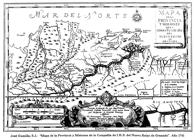Abstract
Not much is known about the demography of the native population of Venezuela in Colonial times. Until mid-17th century, some factual information may be gained from the narratives of the first conquistadores, missionaries and colonists, as well as of authors writing in later times of the Colony, but with access to original sources. After mid-17th century, some quantitative information of demographic relevance was collected by the Jesuit, Capuchin and Franciscan missionaries and, in the last decades of the 18th century, by the colonial administration and the religious authorities. The native population declined, from between 200,000 and 500,000 inhabitants at contact (guesstimates of modern authors) to perhaps 120,000 in 1800, according to Humboldt’s estimate. It is possible that the initial decline became steeper after the first smallpox pandemic of the 1580s and continued, at a slower pace, until the Independence. As in other regions of South America, marriage was early and almost universal, and the high ratio of births to deaths seems to indicate a high potential for growth, interrupted by frequent mortality crisis. A competing cause of the decline of the natives was the process of mestizaje that intensified with the increase of the population of European and African origin.
Keywords
Venezuela; Population; Mission; Mestizaje

 Thumbnail
Thumbnail
 Thumbnail
Thumbnail
 Source: Author’s sketch on the basis of official maps.
Source: Author’s sketch on the basis of official maps.
 Source: Gumilla (
Source: Gumilla (